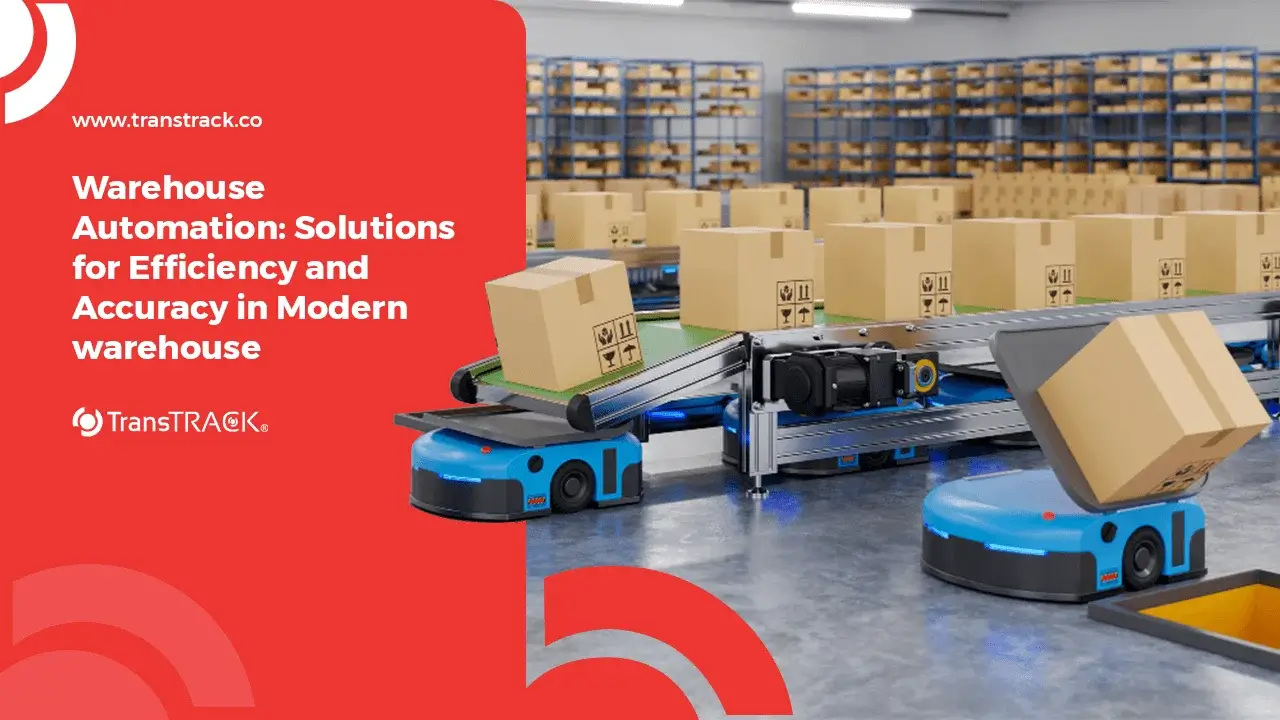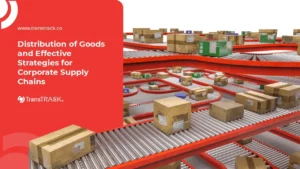Warehouse Automation: Solutions for Efficiency and Accuracy in Modern Warehouses
Posted on September 16, 2025 by Nur Wachda Mihmidati

Manual warehouse management often faces challenges such as inventory errors, slow processes, and high operational costs. As the logistics industry trends increasingly toward digitization and automation, companies are required to improve efficiency and accuracy. This is where warehouse automation plays an important role, helping to transform the supply chain with faster, more accurate, and cost-effective warehouse processes. Learn more with TransTRACK!
What is Warehouse Automation?
Warehouse automation is the application of automated technologies and systems to manage various activities in a warehouse, from receiving goods, storage, picking, to shipping. The goal is to improve operational efficiency, reduce human error, and speed up the logistics process.
With automation, many processes that were previously done manually—such as moving goods, packing, or recording stock—can be done by machines, robots, or software-based systems.
Types of Warehouse Automation
One of the keys to modern warehouse efficiency is warehouse automation, which encompasses various technologies to speed up the processes of storing, retrieving, and managing goods. With automation, warehouses can work faster, more accurately, and more cost-effectively, while minimizing human error. Here are some types of automation systems that are commonly used:
Automated Storage & Retrieval Systems (AS/RS)
AS/RS is an automated racking system that enables fast and accurate storage and retrieval of goods. This system is ideal for warehouses with large volumes of goods and a wide variety of SKUs. With AS/RS, processing time can be reduced and operational efficiency improved.
Conveyor & Sortation Systems
Conveyors and automated sorting systems move goods smoothly between warehouse areas. These systems group goods based on their delivery destination, minimizing errors. The use of conveyors also reduces manual labor and speeds up workflow.
Automated Guided Vehicles (AGV) & Autonomous Mobile Robots (AMR)
AGVs and AMRs are automated vehicles or robots that transport goods in warehouses without the need for operators. These robots can follow specific routes or move flexibly as needed. With this technology, goods transportation activities become safer and more efficient.
Pick-to-Light / Voice Picking
Pick-to-Light uses lights to guide workers in picking items, while Voice Picking gives instructions via voice. Both systems improve picking accuracy and reduce item search time. Workers can work faster without having to read manual lists.
Data Automation with IoT and Sensors
The use of IoT and sensors monitors stock, goods conditions, and warehouse activities in real time. The collected data can be analyzed to improve planning and operational efficiency. This system also helps identify problems more quickly before they have a major impact.
How Warehouse Automation Works
The warehouse automation system works by integrating hardware, software, and sensors to automatically manage the flow of goods in a warehouse. The goal is to reduce manual labor, improve accuracy, and speed up operational processes. In general, how it works can be explained in the following stages:
1. Goods Receipt
Items entering the warehouse are scanned using barcodes, RFID, or IoT sensors. The automated system records item data, including quantity, type, and available storage location. This way, inventory data is updated in real time.
2. Storage of Goods
Systems such as Automated Storage & Retrieval Systems (AS/RS) automatically place goods on the appropriate shelves. Robots or conveyors bring goods to the optimal location based on size, weight, or retrieval frequency. This process reduces the time spent searching for and organizing goods.
3. Picking
When an order is placed, the system instructs robots, AGVs, or workers to pick the requested items. The Pick-to-Light, Voice Picking, or AGV systems guide the picking process quickly and accurately. This reduces errors and speeds up the packing process.
4. Packaging and Shipping
Items are picked and packed automatically or semi-automatically as needed. Conveyors and robots help move packages to the shipping area. Shipping data is updated in real time to facilitate tracking and logistics coordination.
5. Monitoring & Analysis
All warehouse activities are monitored through the Warehouse Management System (WMS) and IoT sensors. The system analyzes inventory data, retrieval speed, and space utilization to improve operational efficiency. This information also helps with warehouse planning and more accurate decision making.
Key Benefits of Warehouse Automation
Warehouse automation systems offer a range of key benefits that make warehouse operations faster, more accurate, and safer. Here are the main points:
- Efficiency & Speed: Accelerate the receipt, storage, retrieval, and delivery of goods.
- High Accuracy: Reduces human error in picking and inventory recording.
- Long-Term Cost Savings: Reducing labor requirements and maximizing space efficiency.
- Work Safety: Reducing the risk of accidents by having robots and automated systems handle heavy tasks.
Steps to Implement Warehouse Automation
Implementing warehouse automation requires structured steps to ensure smooth and effective implementation. Here are the steps:
- Business Needs & Process Analysis: Identify the areas most in need of automation.
- Determining the Right Technology and Vendor: Select the technology and vendor that best suits your warehouse needs.
- Phased Implementation (Pilot Project): Testing in specific areas before full implementation.
- Performance Monitoring & Evaluation: Monitor system performance for continuous improvement.
Conclusion
Warehouse automation enables warehouses to operate faster, more accurately, and more safely. By implementing automated systems such as AS/RS, conveyors, robots, and IoT, companies can reduce human error, lower operational costs, and improve workplace safety. Structured implementation—from needs analysis and technology selection to pilot projects and monitoring—ensures maximum benefits and long-term efficiency for logistics operations.
FAQ Warehouse Automation
1. What is warehouse automation?
Warehouse automation is the application of automated technologies and systems to manage the flow of goods in a warehouse, from receiving and storage to picking and shipping, with the aim of improving efficiency and accuracy.
2. What technologies are used in warehouse automation?
Some common technologies include Automated Storage & Retrieval Systems (AS/RS), conveyor & sortation systems, Automated Guided Vehicles (AGV), Autonomous Mobile Robots (AMR), Pick-to-Light/Voice Picking, as well as IoT and sensors for real-time monitoring.
3. How does an automated warehouse system work?
The automated system works by integrating hardware, software, and sensors to efficiently receive, store, retrieve, package, and ship goods, while monitoring inventory in real time.
4. What are the benefits of warehouse automation for logistics companies?
The benefits include operational time efficiency, high accuracy, long-term cost savings, and improved work safety.
5. How much does warehouse automation cost to implement?
Costs vary depending on warehouse size, type of technology, and level of automation required; ranging from initial investment in hardware and software to implementation and staff training costs.
6. Is warehouse automation suitable for medium-sized businesses?
Yes, warehouse automation can be tailored to the scale of the business. Many systems can be implemented gradually through pilot projects so that investments are more efficient and suited to the needs of medium-sized companies.

By implementing warehouse automation, warehouse operations become more efficient, accurate, and secure, allowing logistics companies to focus on improving service and productivity. To optimize distribution flows and integration between warehouses and fleets, use TransTRACK’s Transportation Management System (TMS), which facilitates real-time shipment monitoring, fleet coordination, and data-driven decision making.
Recent Post
Topic :
Recommended Articles

 Bahasa Indonesia
Bahasa Indonesia







